.jpeg)

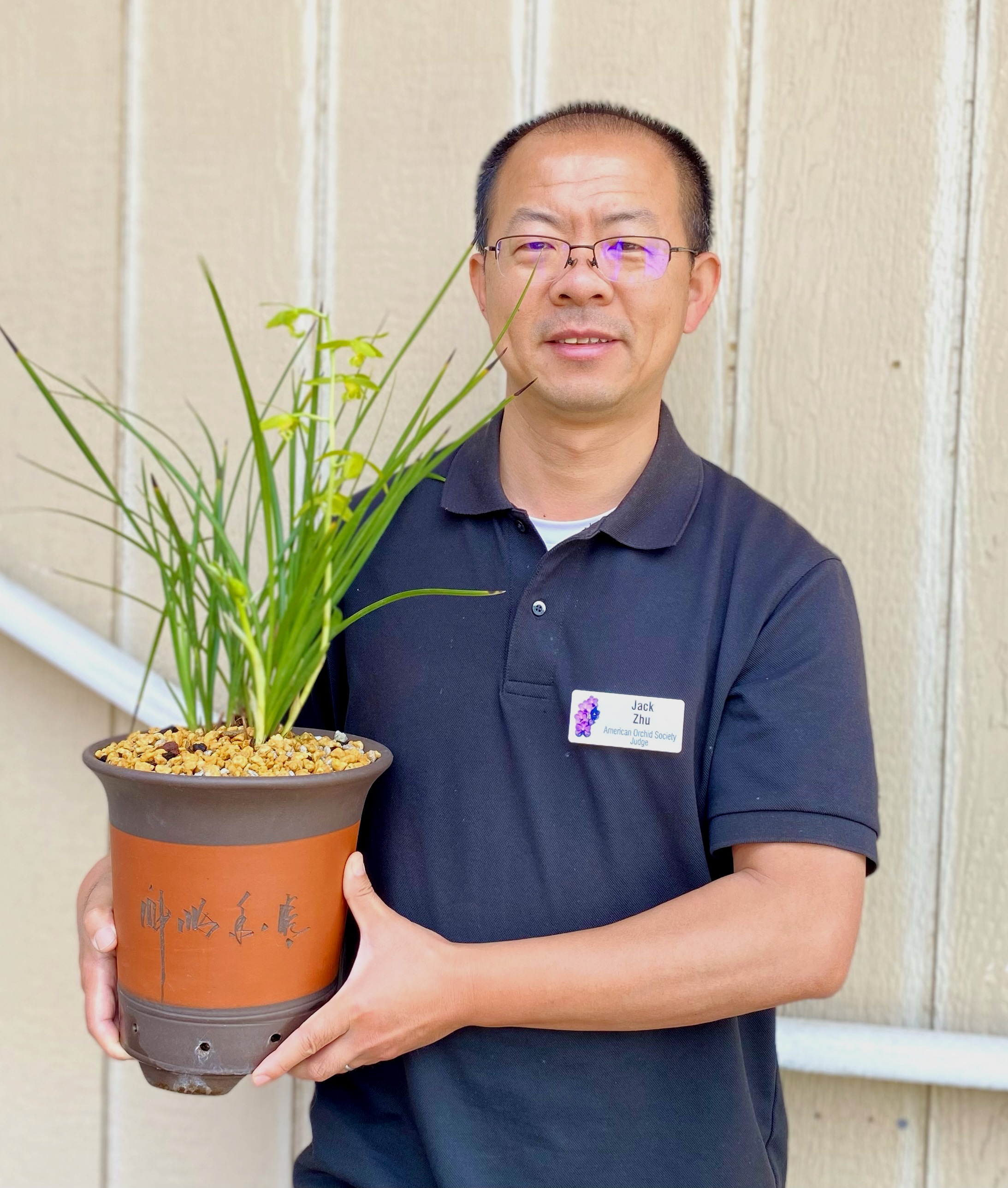
Jack Zhu is an orchid hobbyist from the Los Angeles area in California. He grows many varieties of orchids, focusing on Asian cymbidiums. Jack is also very interested in the culture and history of Asian cymbidiums. Jack is currently an AOS Associate Judge and has more than twenty AOS awards for Asian cymbidiums.
The appreciation and cultivation of these little orchids goes way, way back in China — possibly as far back the 10th–6th Centuries BCE; in other words, cymbidium watching has been going on for millennia! These are shy plants of the deep forests, easily overlooked, but beautifully fragrant and enduring, prized by lovers of nature. Unlike the Western tradition of appreciating orchids almost exclusively for their flowers (the bigger and rounder, the better they are), the Oriental tradition looks at the whole plant, what it tells us about nature, and about life in general. There has been some training involved, to coax orchid judges to change their ways of looking at orchids!
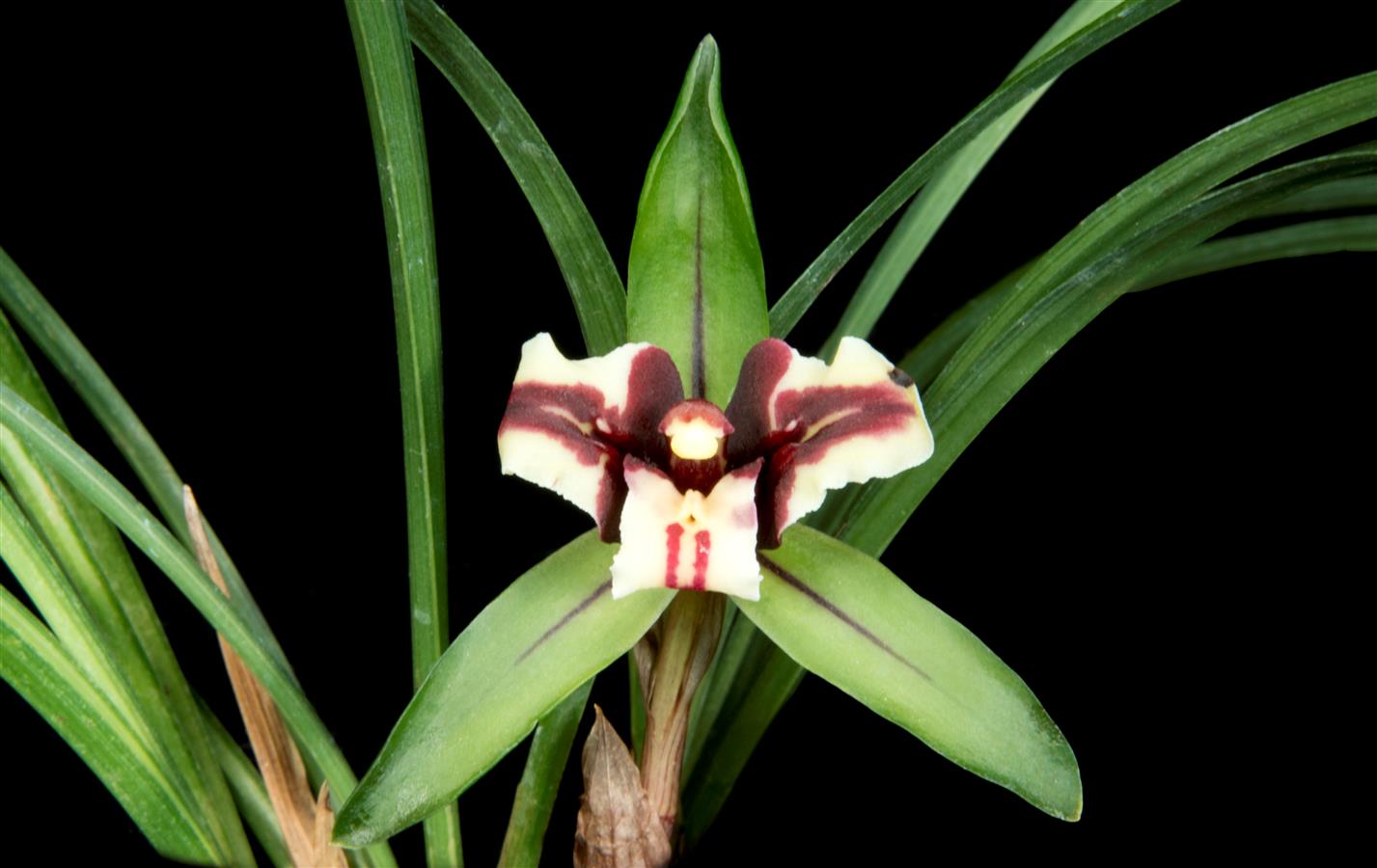
© 2022 Arnold Gum
Cymbidium goeringii 'Hui Rui' AM/AOS (87 points!), exhibited by Jack Zhu at Pacific South Monthly Judging at the Huntinton Botanical Center March 12, 2022
Some say there are three main species involved in this tradition: Cymbidium sinense, goeringii,, and ensifolium, with countless varieties. Or, if you are a taxonomic "splitter", maybe a lot more: these plants belong in the genus Cymbidium, section Jenosa, for which a recent checklist shows two dozen "species" that could possibly be valid (Orchid Digest 85(4):212-252 (October, 2021), Philip Cribb, An Annotated Checklist of Cymbidium Species). At least sinense and ensifolium are described in the earliest surviving manual on cultivation of these plants, dating from 1233. By 1794 (another cultivation manual), goeringii and faberi can be identified, and even later, tortisepalum, longibracteatum, and perhaps others.
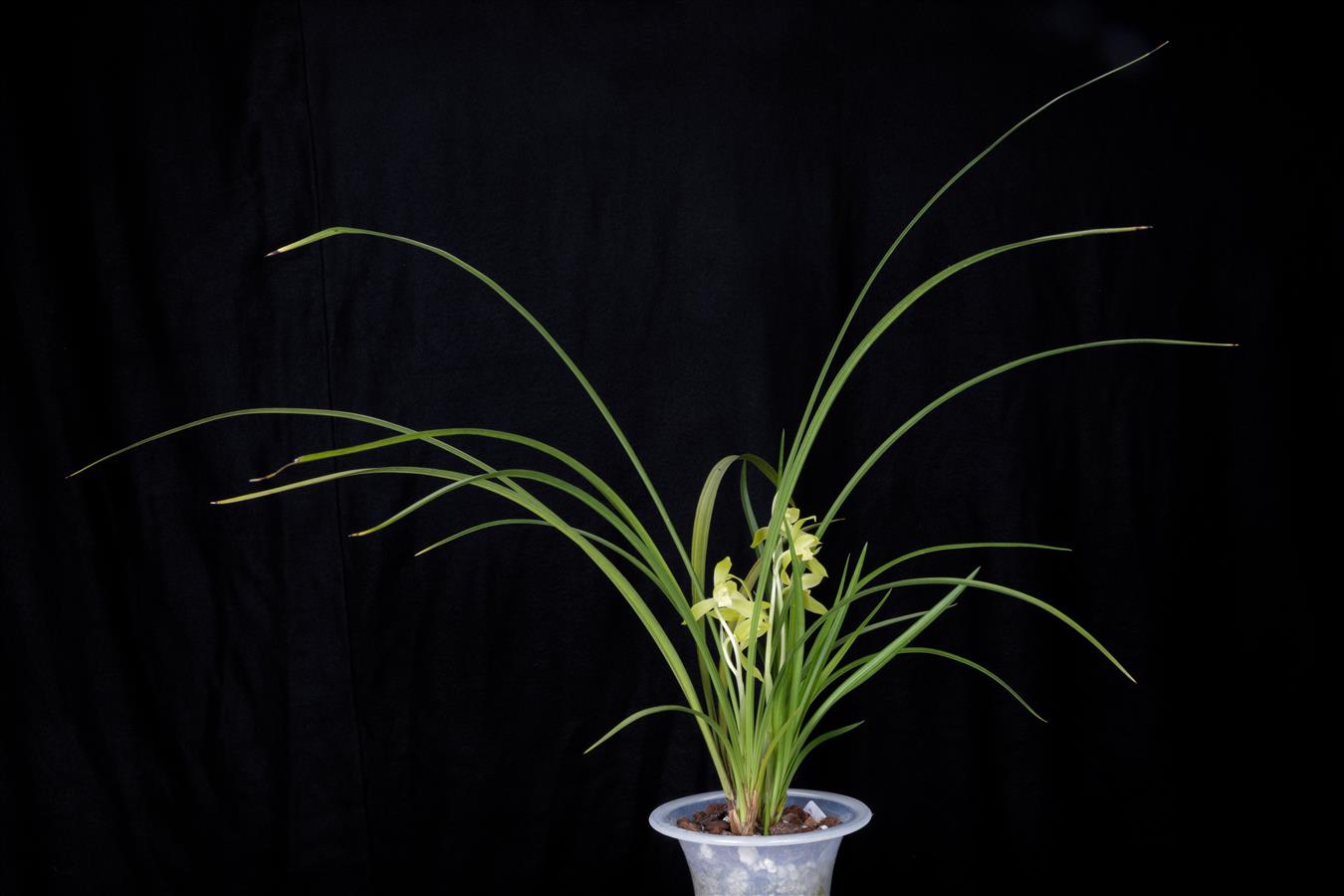
© 2019 Arthur Pinkers
Cymbidium tortisepalum var. longibracteatum 'Xi Shu Da Guang' AM/AOS (81 points), exhibited by Jack Zhu at Pacific South Monthly Judging at the Huntinton Botanical Center February 9, 2019
Jack began growing Asian cymbidiums in 2016. As he gained more experience, he began to popularize these plants and the traditions that come with them among his orchid friends in Southern California. Some of his colleagues in the Pacific South AOS judging team have begun to grow them, to, regularly announcing their successes on Facebook. There is a certain allure in being able to grow and flower cymbidiums in a very small outdoor space, that also have fragrant flowers. By comparison, standard cymbidiums, and many of the "miniatures" as well, take up a huge amount of growing space!
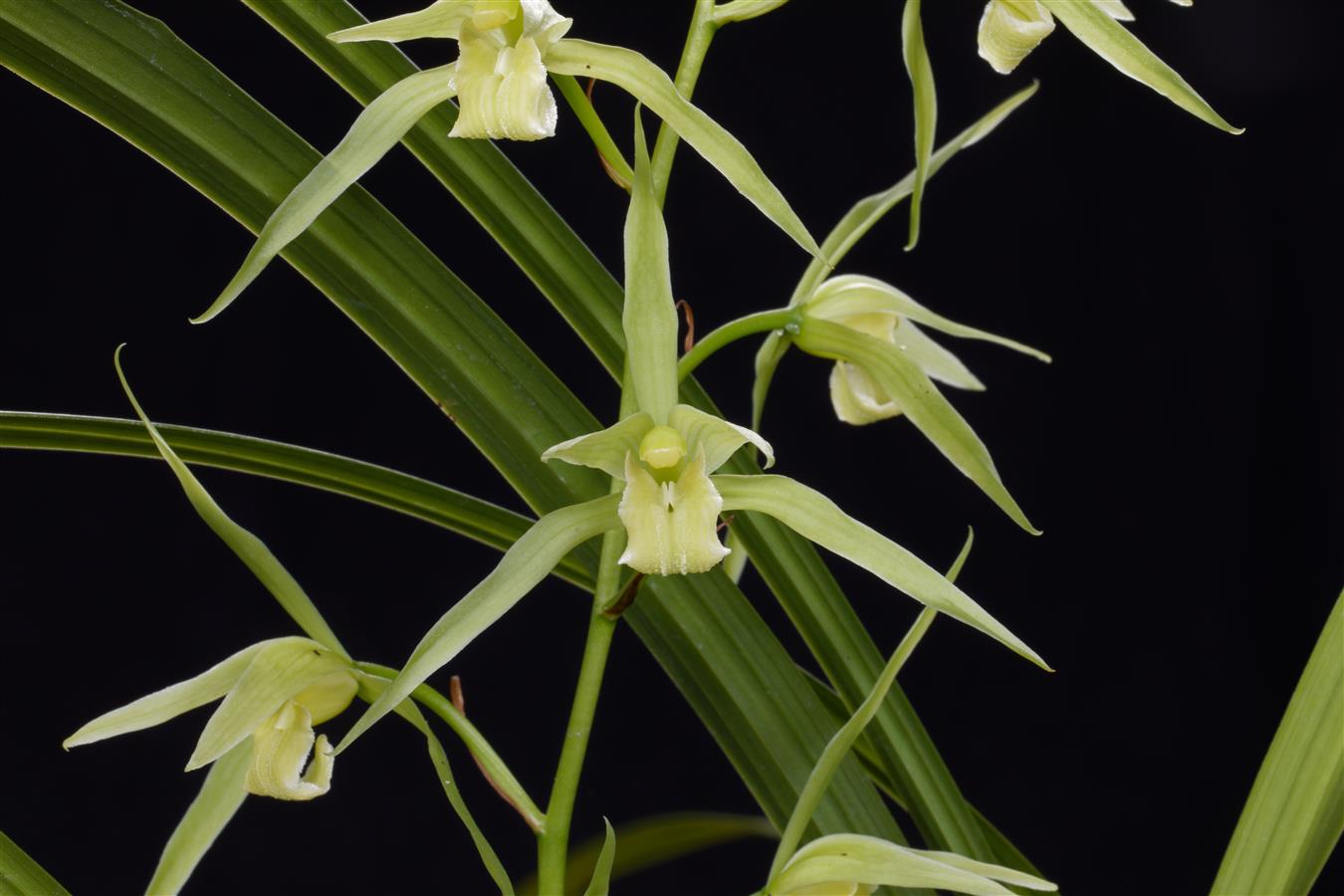
© 2018 Arthur Pinkers
Cymbidium kanran 'Hu Shan Su' HCC/AOS (78 points), exhibited by Jack Zhu at AOS judging our monthly meeting in Long Beach December 17, 2018
A problem arises, however, in what to call them collectively: Chinese cymbidiums? Not only do a large number of other species that gave rise to today's "Standard" cymbidiums occur in China (which, after all, is a very big place), the traditional species venerated in the Chinese horticultural tradition also occur outside of China. Asian cymbidiums? Even less helpful in distinguishing them from "traditional" cymbidiums, since essentially all of the cymbidiums come from Asia proper, Australia, or some of the islands in between. East Asian cymbidiums? Same problem! Nevertheless, "Asian cymbidiums" seems to be most widely understood term referring to these plants.
For his program at SCOS, Jack will concentrate on describing the forms and colors of this group, as well as how he grows them, and especially, how to repot them. As with most orchids, the most important part of the plant, for successful growing, is the roots, which are usually hidden in the potting medium! We are assured that this will all make better sense once we see how the plants grow, especially underground, and how the medium and the traditional pots support the plants.
A Favorite at the Huntington International Orchid Shows
Jack's exhibits present an orchid world in miniature. The diverse forms and the careful arrangement, including when possible also the background, always intrigue visitors, and usually impress the judges as well. These are his exhibits for 2019 and 2022.
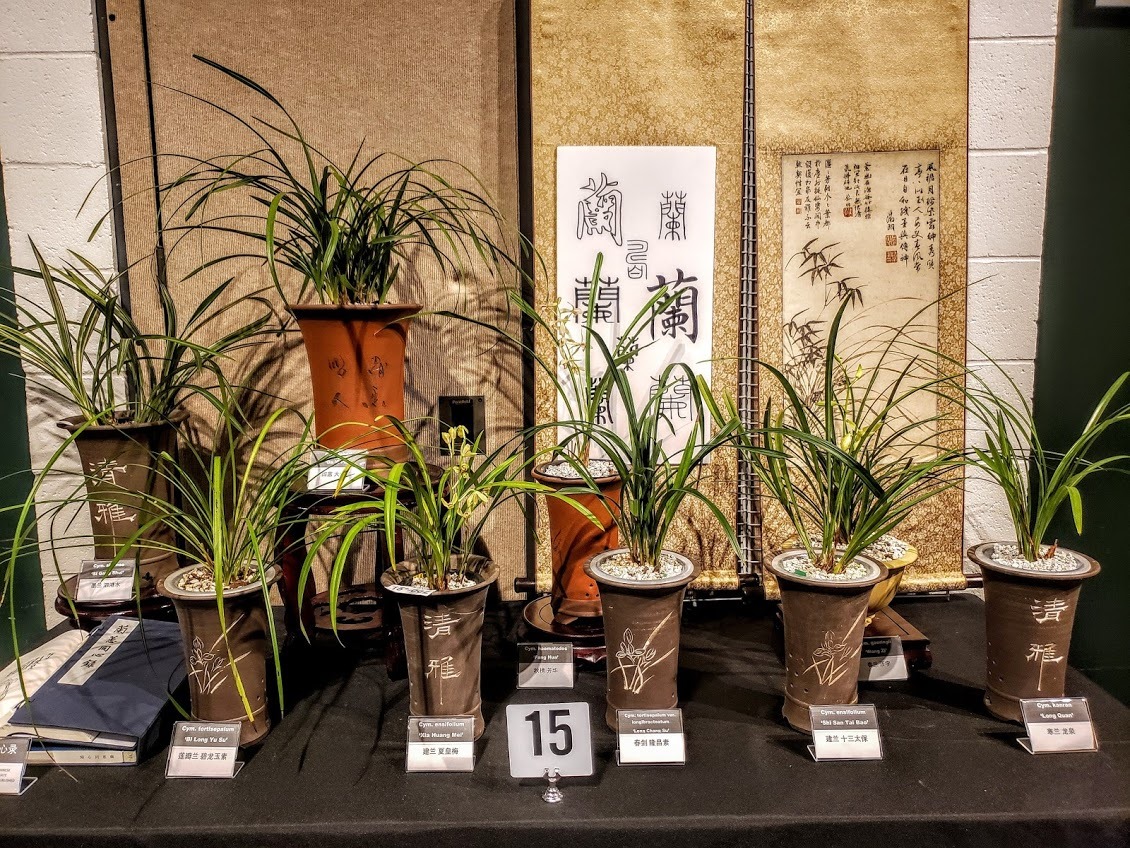
2019, Huntington International Orchid Show. Through careful placement and taking advantage of the room illumination, the shadows of the leaves became an active part of the exhibit, a surprising effect.
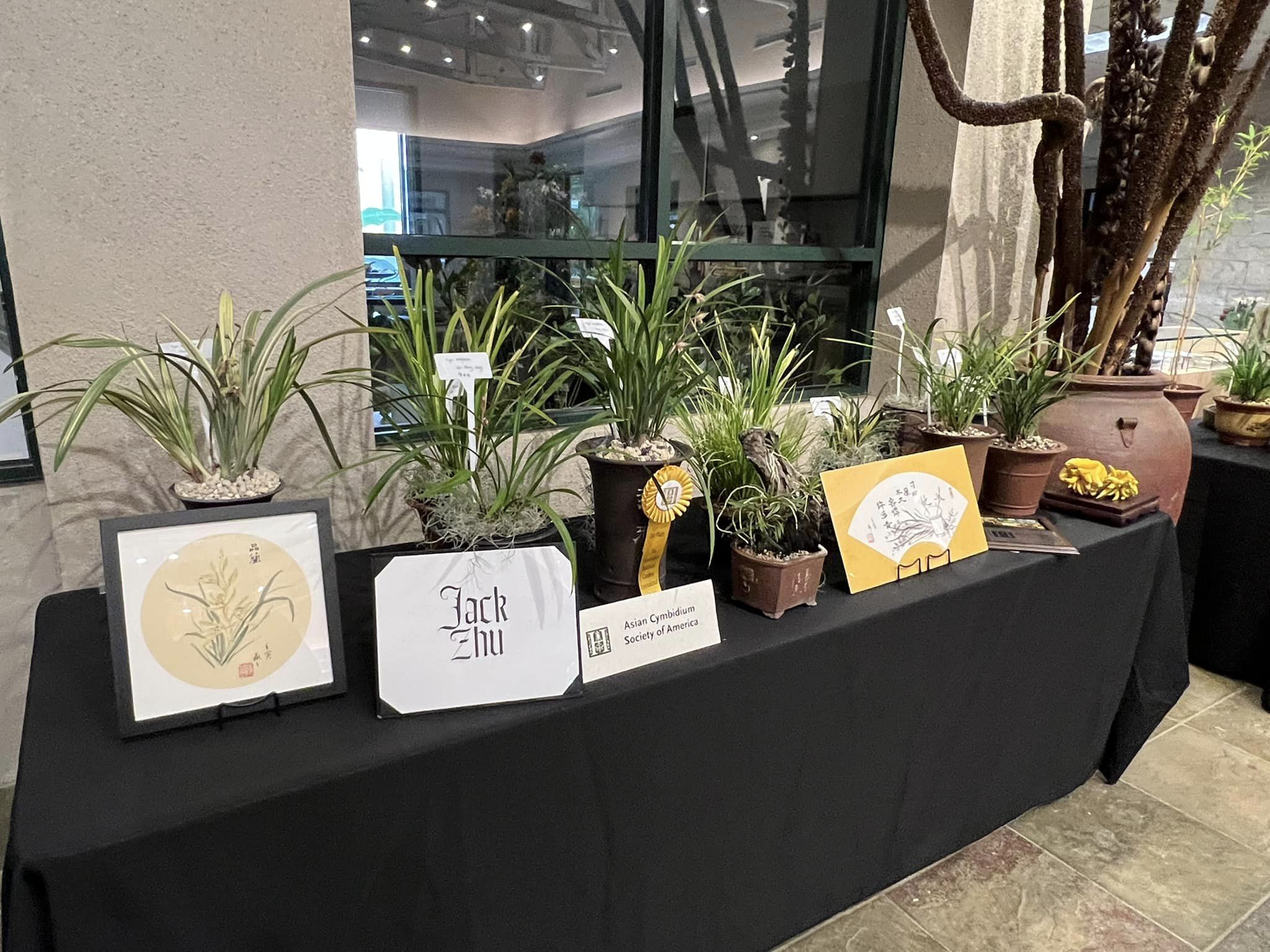
2022, Huntington International Orchid Show. The exhibit won an award, and a lot of visitors were intrigued by the delicate flowers and subtle variegation of the leaves.
Cymbidiums in Chinese Art
Ink on paper or silk paintings of Cymbidium orchids have been a fixture of Chinese art since at least the 13th Century. Not only does this art form capture the simplicity and beautiful form of the plants, it has from time to time incorporated political elements as well, such as omitting the soil and roots to comment on the occupation of the Chinese land by a foreign dynasty. Some artists go for more detail, others reduce the plant to its simplest form, a few deft brush strokes with a hint of a small flower. This example may or may not be from the master Zhao Mengjian, active during the Song Dynasty; when it was auctioned by Christie's, it was dated as 15th–16th Century instead of the expected 13th Century. In any case, an excellent example of the form.
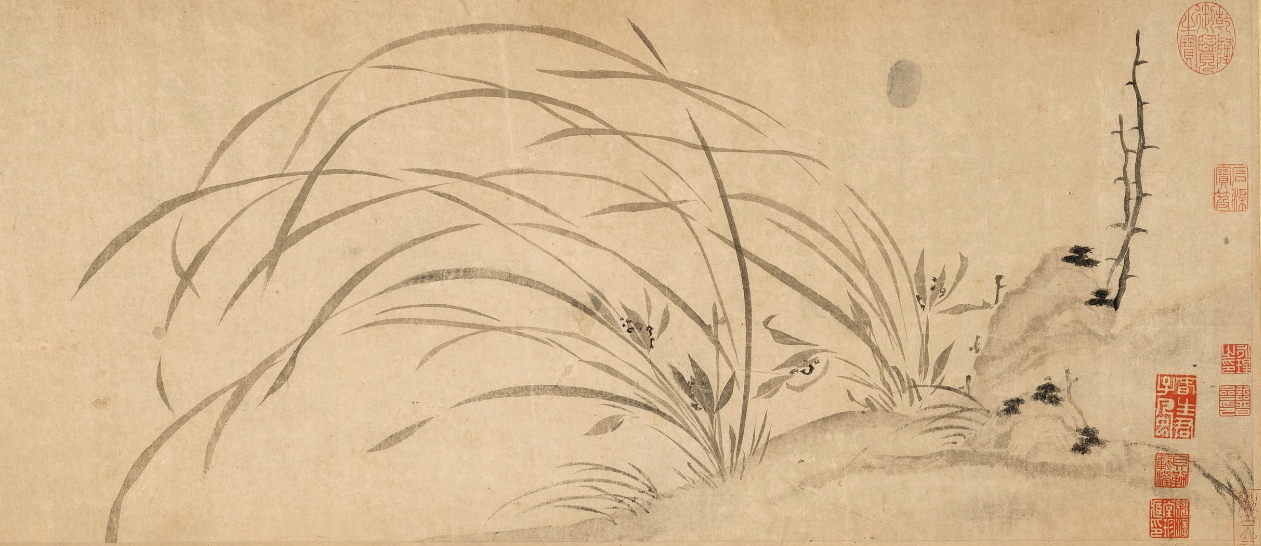
The art form continues today. In this case, as performance art! Enjoy this video!
A glimpse of a cymbidium-themed party hosted by Jack Zhu: "Painting Summer Orchid". Absolutely delightful!